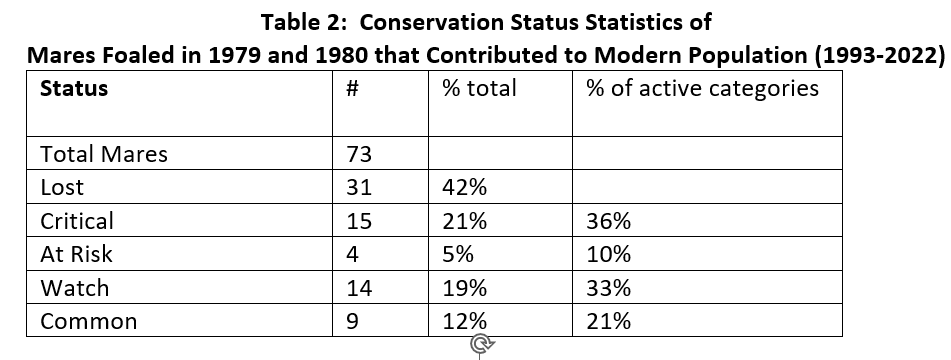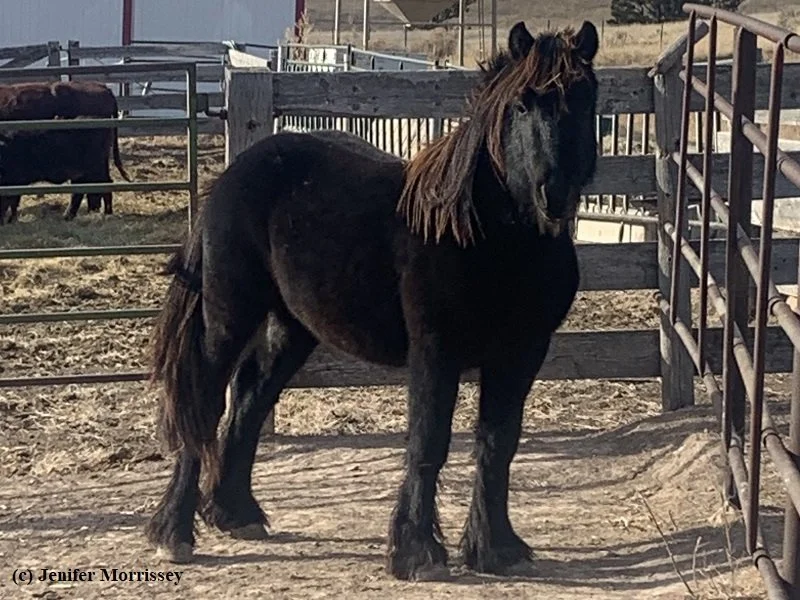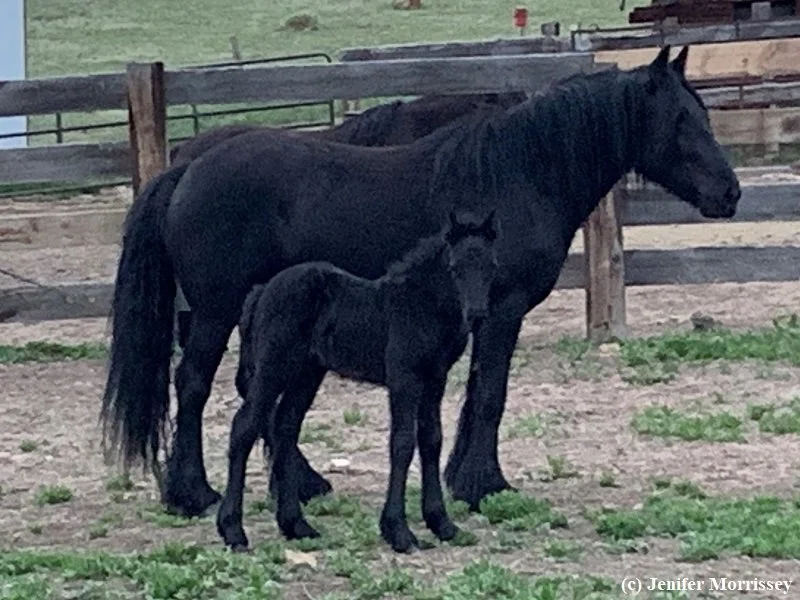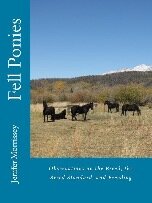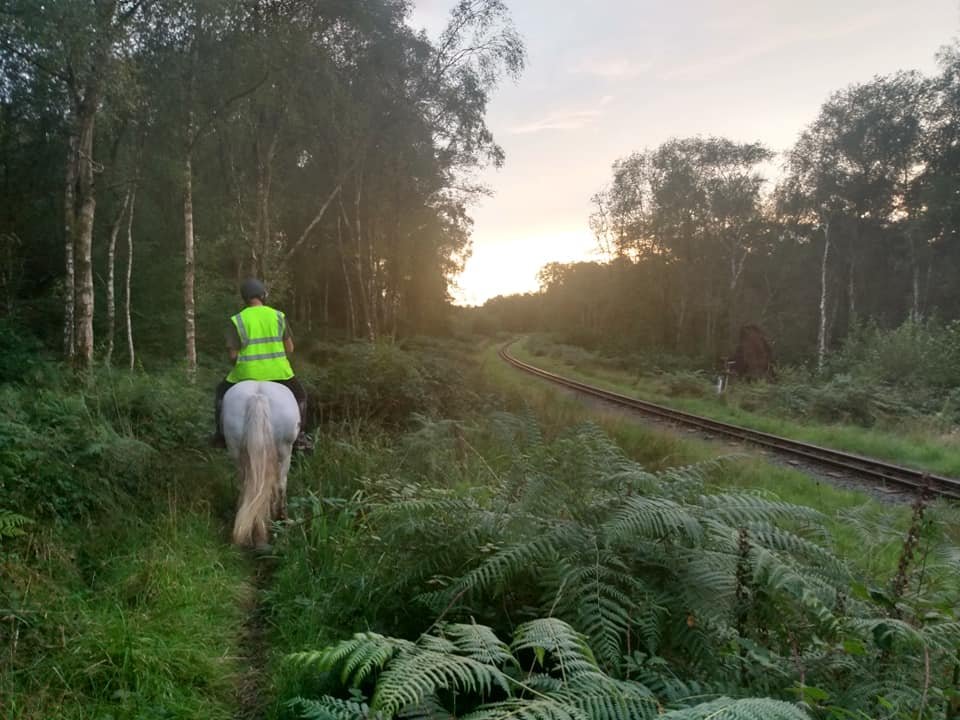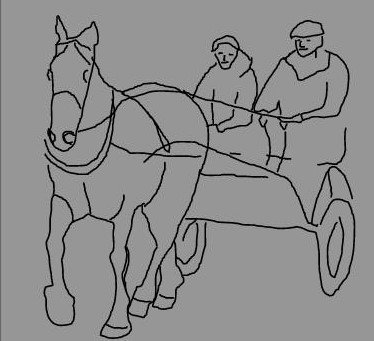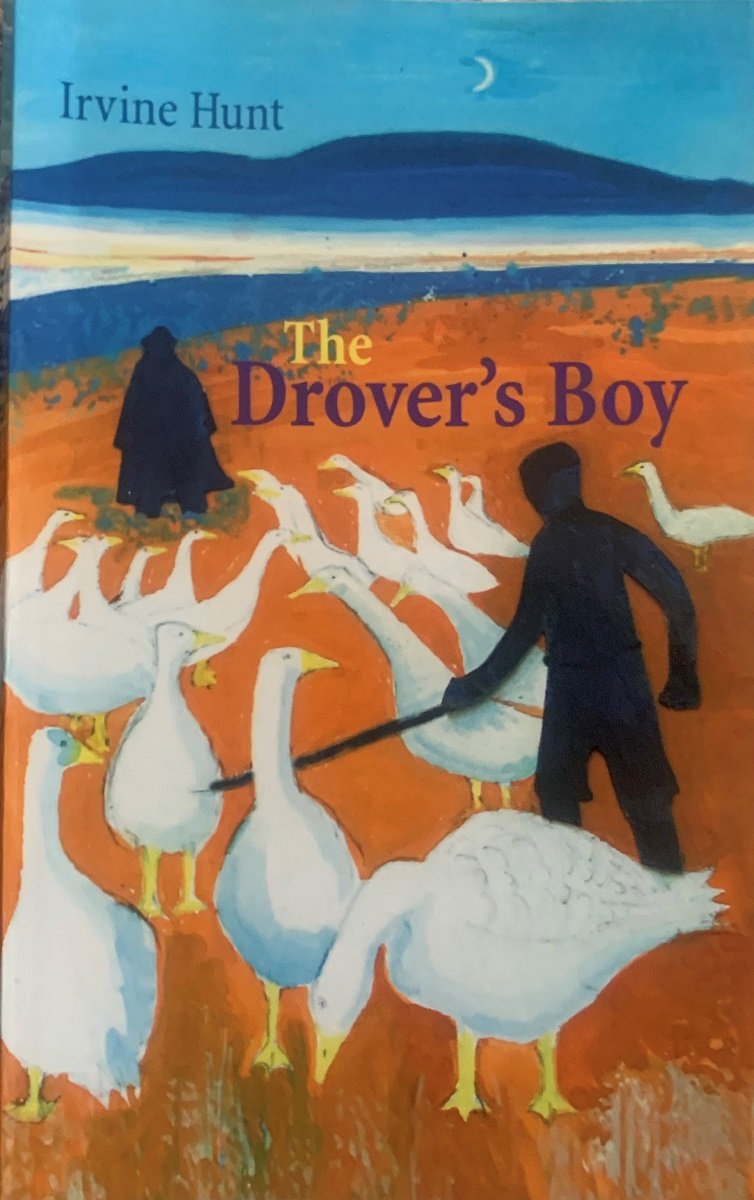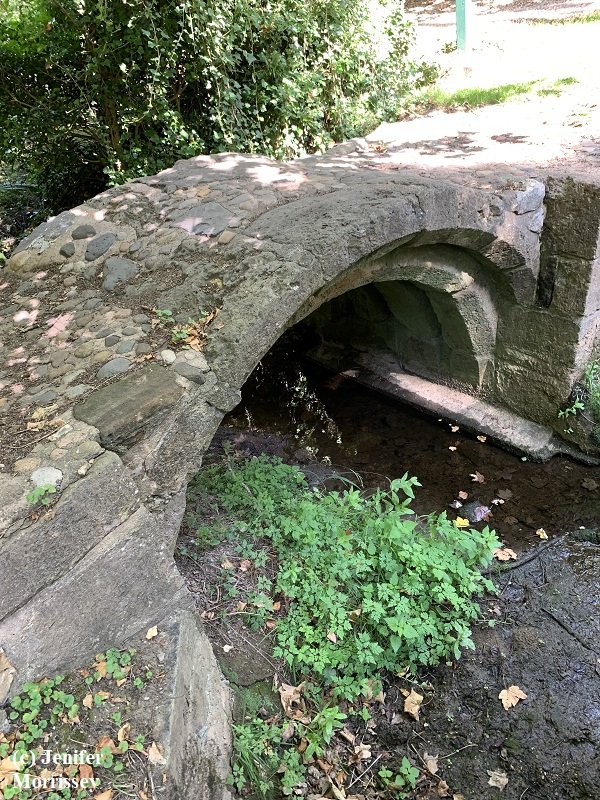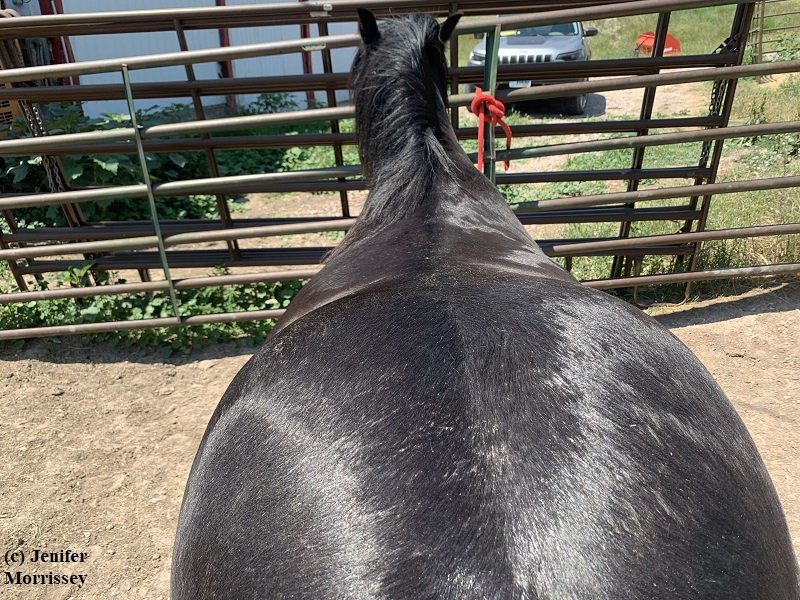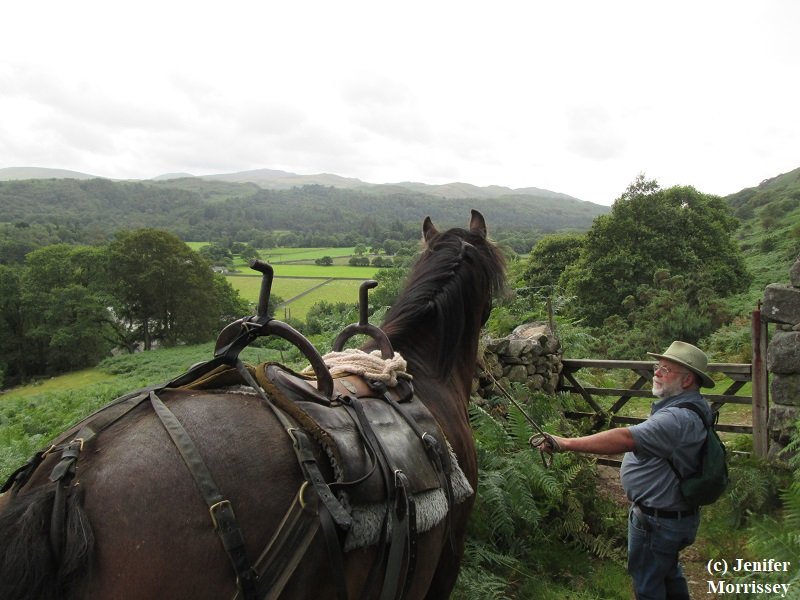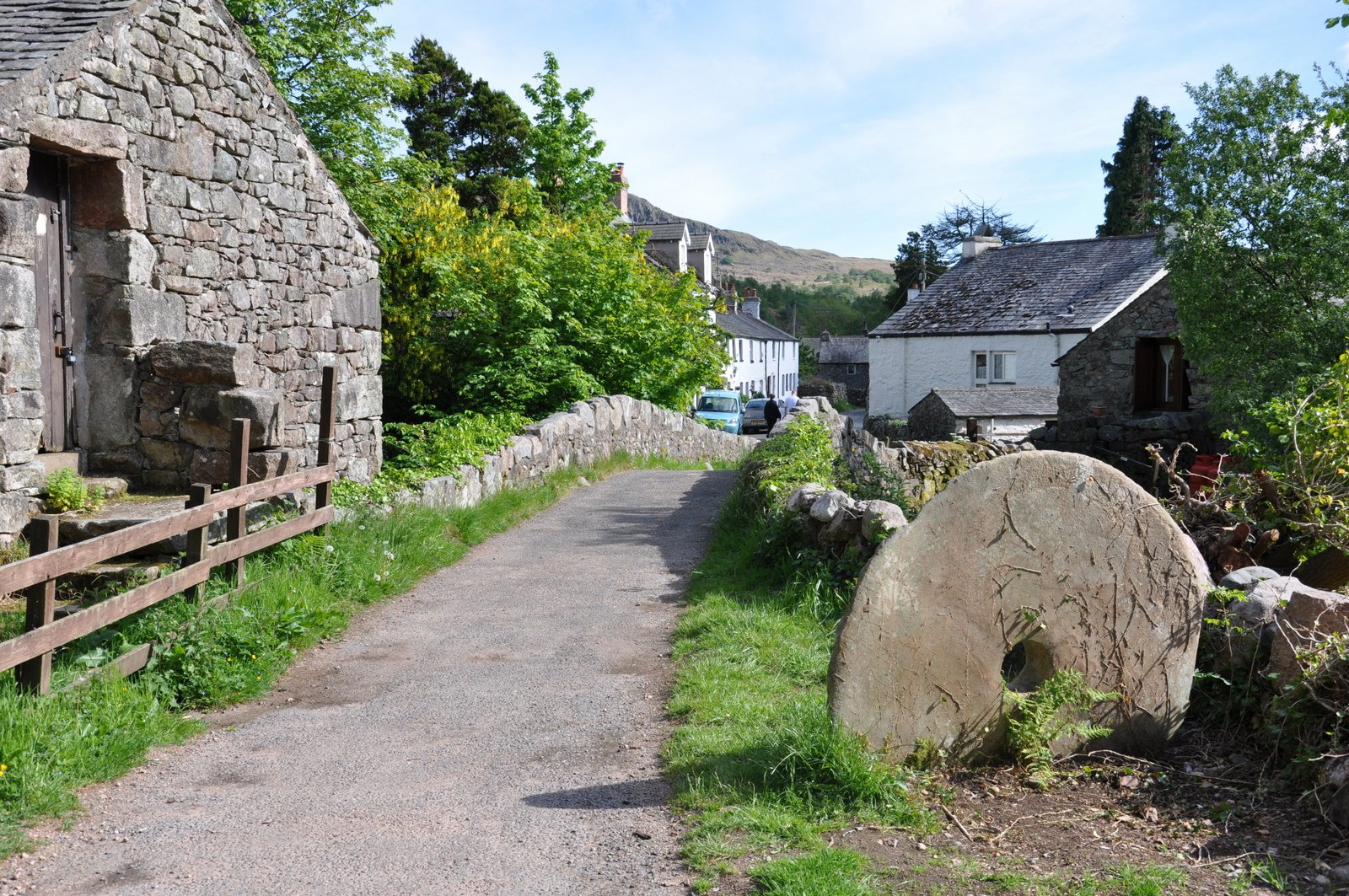Fell Pony Matrilineal Diversity – Part 2
/I have a research project underway about the matrilineal diversity in our breed. It was inspired by Dr. Claire Winton’s observation that we have good maternal diversity now but we need to not lose it. (1) Of course, in order to not lose it, we have to understand where that diversity is! I quickly learned that I needed some help, so I had my software engineer add a feature to my pedigree database program to make my research easier. Because this research project is a big one, I have chosen to publish smaller articles as I proceed, rather than one large paper at the end. The first article was called “Mare Lines in Need of Conservation.”
Fell Pony mare Swindale Rose represents one of the mare lines that is now lost to our breed. Photo courtesy Ruth Eastwood.
Because my research about matrilineal diversity is based on pedigrees, the usual caveats about pedigree research apply. First, genetic diversity does not equate to pedigree diversity in our breed (see my article “The Bottleneck in Fell Pony History,” click here.) Second, the conclusions reached here are only as good as the pedigrees we have to work with (see a more complete discussion of this point in Part 1 of this research, click here). Third, some lines may have been let go for a reason. They may not have been of proper type or had a fault deemed too serious to allow it to continue in the breed, for instance. Unfortunately, in the case of mares especially, it is often the case that owners find they have to choose between working and breeding, and the choice of working can lead to losing a mare line as well.
I have now completed my analysis of the mares born in 1979 and 1980 that have contributed to our modern population. The new software feature allows me to identify all their female descendants as well as their female line back in time. I learned from this most recent work that I will likely need to look at an entire generation or 9 years total: 1976-1984. So far, though, some interesting findings have emerged:
Dr. Winton said we had good matrilineal diversity but need to not lose it. My analysis so far provides a cautionary tale: of the 72 mare lines born in 1979 and 1980 that contributed to our modern population, we have already lost 42% of them. It makes sense that we need to take care to not have that trend continue.
We truly have an international breed. Some of the mare lines that we are now most in danger of losing only have actively bred female descendants outside the UK.
It was necessary to add a ‘Watch’ category to the previous categories I identified. This category is for mare lines that are actively being bred but only by a single breeder. Fully a third of the mare lines I have studied so far land in this category. We all know how easily good ponies can be lost to the gene pool when a steward ceases breeding ponies. Table 1 below describes each conservation category in detail.
There are about 1/3 as many ‘source mares’ as total mares in 1979-80. I’ve labeled the furthest back registered mare in each line as the ‘source mare.’ It could be argued that we need only look at source mares when looking at matrilineal diversity. However, given that studies of our breed’s DNA say we have more diversity than studies of our pedigrees do, it seems prudent to focus on a slightly wider pool of female ancestors than might be suggested based on pedigrees alone.
So far, I have found 21 unique source mares behind 72 total mares in 1979 and 1980. The pedigrees, therefore, suggest that the mares in my study are quite related. However, I was just told a story about one of the mares in my study. A former owner of the mare explained in detail how the mare’s pedigree was likely not correct. Having a broader pool of mare lines to review, rather than focusing just on the source mares, is therefore prudent.
Only four of the source mares so far are from the formal Inspection Scheme; the rest were added to the registry before then. Only one of the four source mare lines I have so far identified from the formal Inspection Scheme has been lost.
Of the mare lines we have not lost from 1979 and 1980, the majority (79%) are in need of conservation work. Roughly a third are Critical status, a third are Watch status, and 10% are At Risk. See Table 2 below.
These mares are from the Watch List Wansfell Jasmin line
Here’s an example of some actionable information I’m hoping to produce from this research. Table 3 below lists Mare Lines with Critical status. Next to it are the female descendants that are thought to be still living and could continue the line. If someone in our community knows where any of these descendants are, perhaps they can find out if it would be possible to bring the mares back into the breeding population to continue the critically endangered female line.
Note: Wansfell Jasmin line is a Watch List, not critically endangered line.
One of the mare lines listed in Table 3 is Wansfell Jasmin. Upon further study, I have determined that that line is in the Watch category because I am actively breeding mares in that line. I was surprised that at the moment I have the only actively bred mares descended from this mare. I thought a different mare in my herd was from a line in need of conservation, but I was wrong. I am now refocusing on doing what I can to keep the Wansfell Jasmin line going.
If you find out anything about any of the mare lines in Table 3, I would love to hear. If you have suggestions about how this information could be better presented, I would love the feedback. I expect to provide an article in some form for the Fell Pony Society newsletter this fall, so any help in improving the understandability of this topic is appreciated!
Winton, Clare, et al. “Genetic diversity within and between British and Irish breeds: The maternal and paternal history of native ponies,” Ecology and Evolution, November 2019.




